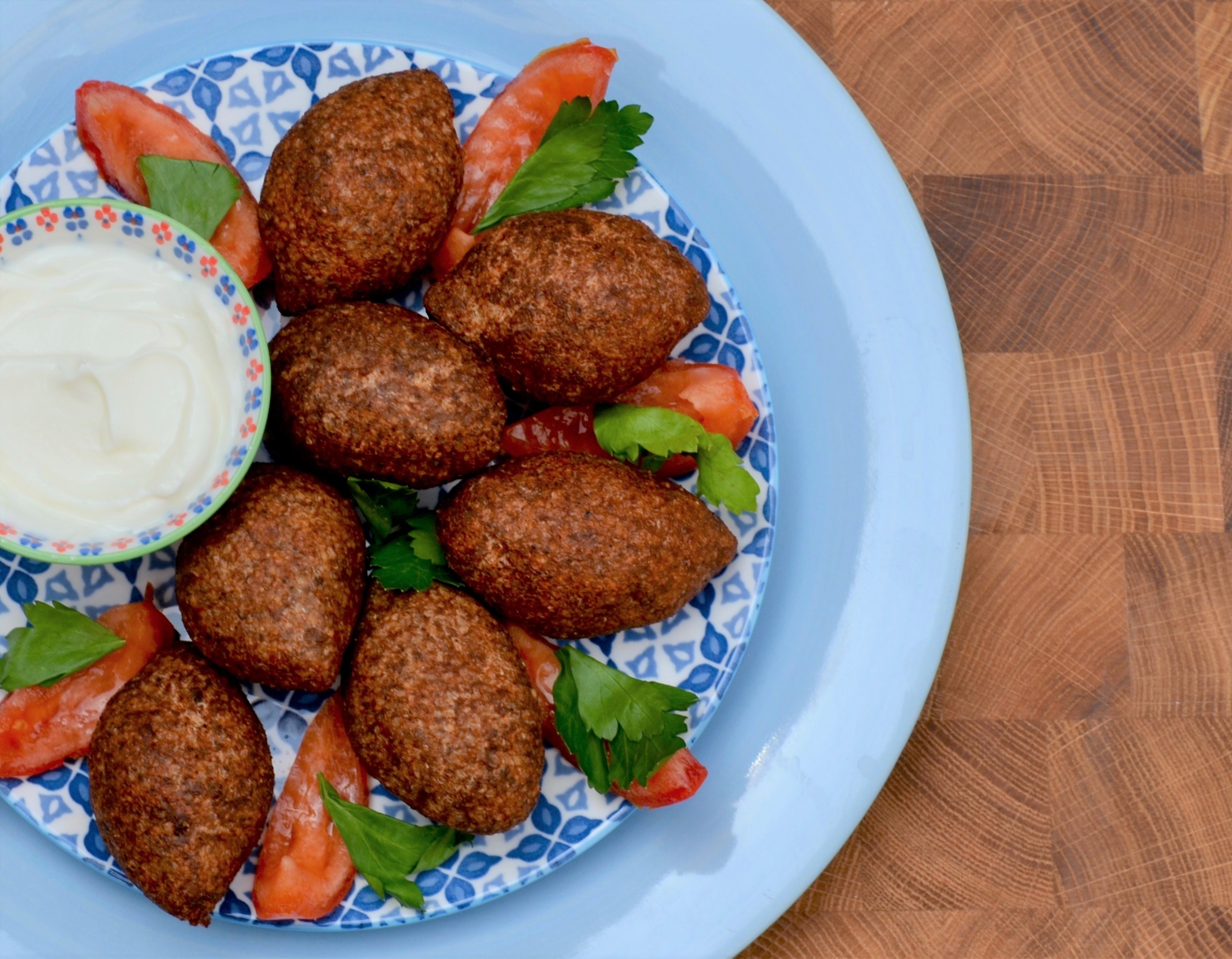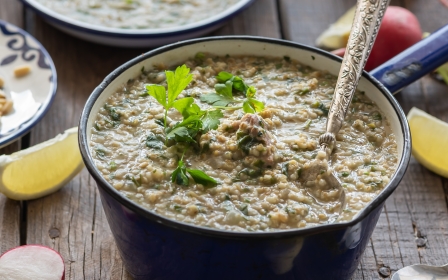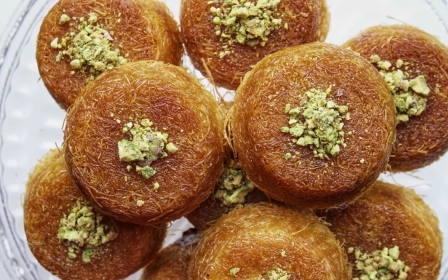How to make savoury kibbeh meqliyeh, Aleppo style

Kibbeh meqliyeh is a delicious little Middle Eastern croquette, made from a bulgur and meat shell that's filled with minced meat and nuts. It's a dish especially associated with Aleppo, Syria's largest city, where it comes in dozens of fillings, shapes and sauces. There is always a plate of it on our menu for every iftar during Ramadan.
But kibbeh meqliyeh can also be a somewhat labour-intensive dish: my mother would dedicate a day for making different kinds to ensure our freezer was always replenished so some could be taken out and cooked as needed.
I remember the first time I asked my grandmother to teach me how to shape kibbeh. As I struggled to finish my initial attempt, she had already made 10 to perfection, teasing me that I would eventually get better with practice. She was right, and while my kibbeh are still nowhere near as good as hers, they have improved and are worth the effort.
Kibbeh was traditionally made by pounding meat and bulgur together with a large pestle and mortar but nowadays most people use a meat grinder.
In Aleppo, the locals use a meat called habra (very lean meat), which has a very smooth consistency. You can recreate that here using a food processor and ice cubes, as described below. Just ensure that the meat is very lean to get the consistency right.
New MEE newsletter: Jerusalem Dispatch
Sign up to get the latest insights and analysis on Israel-Palestine, alongside Turkey Unpacked and other MEE newsletters
Recipe
Makes: 30
Preparation and cooking time: 2 hours
1. Ingredients
For the meat and bulgur shell
- 500g (1.1lbs) extra lean minced beef
- 400g (14oz) fine bulgur
- 1 medium-sized onion, quartered
- 2 tsp salt
- 2 tsp bhar (Aleppo spice mix) or Lebanese 7-spice mix*
- 1 tbsp all-purpose flour
For the meat filling
- 1 onion, diced
- 350g (12oz) minced beef
- 1 tsp salt
- 1 tsp bhar (Aleppo spice mix) or Lebanese 7-spice mix*
- 50g walnuts, roughly chopped
- 2 cups (500ml) cold water mixed with 2 tsps of salt for shaping the kibbeh
- vegetable oil for frying
* the Lebanese seven-spice mix is easily found in most Middle Eastern stores: otherwise, you can replace the bhar with ½ tsp allspice, ¼ tsp ground black pepper, ¼ tsp ground cinnamon, ¼ tsp ground nutmeg, ¼ tsp ground cardamom, ¼ tsp ground cloves
2. Method
Make the filling
- Heat 1 tbsp of vegetable oil in a frying pan and add the diced onion. Cook on a medium heat for about 5 minutes, until the onions are soft.
- Add the minced meat, using a wooden spoon to break it apart. Stir until the meat is cooked through. Add the salt and spices to taste.
- Turn off the heat and add the chopped walnuts to the meat. Mix in until they are well combined. Set aside to cool down
To make the meat and bulgur shell
- Rinse the bulgur in a fine-meshed sieve.
- Place the bulgur in a bowl and add ¼ cup of water. Allow the bulgur to rest for 30 minutes.
- Place the lean minced beef in a food processor and add one ice cube. As the ice cube is blended in, the meat will form into a ball with a smooth, dough-like consistency.
- Take the meat out and place it in a bowl. Place the bulgur and quartered onion in the processor and blend until the onion is finely chopped and blended in with the bulgur. Remove and place in a bowl.
- Place half the meat mix with half the bulgur mix in a food processor. Pulse until the two are thoroughly combined. Repeat with the remaining bulgur and meat (I usually do this step in two stages as my food processor cannot process that much meat and bulgur at the same time).
- Knead the meat-bulgur mix with the flour, salt and spices so that it becomes a smooth dough.
- If using a meat grinder: Process the bulgur and onion together using the fine-holed plate, then run the mix through the grinder again, adding the meat, salt and spices to the mix. Knead the mix with the flour so that it comes together in a smooth dough.
To shape the kibbeh
- Wet your palms with the cold salted water.
- Take a golf ball-sized piece of the meat and bulgur mix. Roll it between your hands to form a smooth ball.
- Using your index finger, slowly make a hole in the centre of the ball as you turn it around in the palm of your other hand.
- Keep going until you have made a cup-shaped shell with one end open.
- Using a small teaspoon, place two spoons of the meat filling into the shell and carefully bring the open side together, pursing it gently between your index finger and thumb until it closes.
- You can now either roll the ball between your hands so that it is smooth all over. Alternatively, you can point the two sides of the ball to get a more traditional oval-shaped kibbeh.
- Continue until you have used up all the shell and filling mixes.
Cooking the kibbeh
- Heat the vegetable oil in a saucepan until it reaches 170ºC (325ºF).
- The kibbeh needs to be deep fried so ensure there is enough oil to cover it. Note: Do not overcrowd the kibbeh. If you put in too many together then it will lower the oil's temperature and make the kibbeh fall apart.
- Fry each kibbeh for about 3-4 minutes until they are lightly brown and crispy.
- Transfer to a plate lined with paper towels to absorb any excess oil.
Kibbeh is best enjoyed hot or at room temperature with some yoghurt or a fresh salad. You can also freeze the uncooked kibbeh, then take it out of the freezer as needs be and fry.
Mouna Elkekhia is a chef and member of the Marhabtayn Syrian supper club. You can follow her on Instagram @mounaskitchen, website or Facebook page
This article is available in French on Middle East Eye French edition.
Middle East Eye delivers independent and unrivalled coverage and analysis of the Middle East, North Africa and beyond. To learn more about republishing this content and the associated fees, please fill out this form. More about MEE can be found here.







